|
|
 |
|
December 31, 2011
Otium Cellars Loudoun County (Virginia) Dornfelder 2009 ($22)
I gave this wine 93 points when I tasted it. I hate to go all Parker on you, but my point is that I rated more than two dozen wines higher than that. And this was just a wine I tasted, not one I enjoyed over the course of an evening.
But here's the thing: I tasted this wine in early October, and I've been thinking and talking about it ever since.
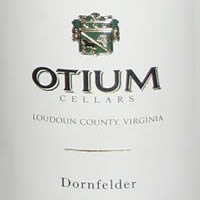 The only other wine that stayed with me like that was Domaine Romanee-Conti Montrachet 2008, which I gave 99 and might give 100 in retrospect, as I think it's the greatest Chardonnay I've ever had. That wine's price initially looks similar to the Otium Dornfelder. Spin it out one digit at a time: $ .. 2 ... 2 ... 2 ... 5. Yep, $2225. I loved it, but I'd rather have 100 bottles of the Dornfelder, easier said then done as only 1200 were made. The only other wine that stayed with me like that was Domaine Romanee-Conti Montrachet 2008, which I gave 99 and might give 100 in retrospect, as I think it's the greatest Chardonnay I've ever had. That wine's price initially looks similar to the Otium Dornfelder. Spin it out one digit at a time: $ .. 2 ... 2 ... 2 ... 5. Yep, $2225. I loved it, but I'd rather have 100 bottles of the Dornfelder, easier said then done as only 1200 were made.
So rather than pick an unaffordable wine as my Wine of the Year, I picked an unobtainable one. See: I'm hip. (How many hipsters does it take to change a light bulb? Answer: It's a really obscure number, you probably wouldn't know it.)
Here's why. For my Winery of the Year, I made a statement, urging you to support The Winery Closest to You. This wine is a major reason.
I tried it in the tasting room of 8 Chains North, a Virginia winery owned by Ben Renshaw, who planted Otium's vineyard and makes the wine. But you have to give Otium owner Gerhard Bauer credit for deciding to plant Austrian grapes, including Blaufrankisch, which seem to do well in Virginia's hot, humid summers and wet autumns.
The Dornfelder is earthy and musky on the nose: I kept sticking my nose back in it like a furry animal had just nipped around the corner, and I was trying to get another glimpse. There's blackberry and cherry fruit, and also some leatheriness.
The first taste is usually, but not always, cherry fruit, but the earthiness is right there soon enough. There's some tangy orange peel, a good quality to keep bringing you back. It's texturally pleasurable, with a medium body and tannins like soft fingers. When I was in the room with it, I kept wanting to put down whatever else I had in my hand to go back to it.
And it's only 12.5% alcohol. In the first draft of these tasting notes I led with that, but don't want to make this choice any more of a political statement than it already is. I love its low-alcoholness, but I drank a bunch of other wines in that range this year and this is the only one I obsess on, not that I'll ever taste it again.
So why'd I pick it? Because it means something to me: It means that one of my favorite wines of the year, a wine I weighed against DRC Montrachet for this choice, can come from somewhere in the US outside the West Coast. It means that drinking New Mexico or Texas or Michigan wines isn't a mercy purchase: It's a shot at world-class, No. 1 level greatness.
I was criticized recently by a Virginia wine blogger for condescending to the wine scene there by writing a Wine Review Online column about RdV, which may be the state's best winery. He said, rightly, I wasn't giving Virginia enough credit. Point taken, but I'm not alone.
So this fits in with my Winery of the Year selection. Maybe there's not a wine this fine being made in your state. But wines like this are out there under the radar: small production, no advertising, a rudimentary website, sold mostly from another winery's tasting room.
Next year I'll pick something you can buy. In the meantime, think about all the great local wines that you can buy and I can't.
Follow me at @wblakegray.
Posted by W. Blake Gray at 11:57 AM
|
|
December 28, 2011
Wine of the Year:
Plantagenet, Great Southern (Western Australia) Chardonnay 2007 ($21, Imported by Old Bridge Cellars): I’ve got multiple reasons for choosing to honor this wine, not the least being its indisputable deliciousness and outstanding versatility with food. It hovers near the line  dividing medium- and full-bodied wines, showing satisfying richness but also a lot of freshness, lift, and linear energy. There’s a core of fruit recalling ripe peaches and baked apples, with a zesty edge of citrus lending definition and cut to the finish, which also shows a subtle mineral undertone. Light enough to flatter a simply prepared fish fillet but sufficiently gutsy to work with scallops or grilled tuna or--for that matter--white meats like pork or veal, this is an exemplary wine at the table as well as a deeply satisfying sipper. dividing medium- and full-bodied wines, showing satisfying richness but also a lot of freshness, lift, and linear energy. There’s a core of fruit recalling ripe peaches and baked apples, with a zesty edge of citrus lending definition and cut to the finish, which also shows a subtle mineral undertone. Light enough to flatter a simply prepared fish fillet but sufficiently gutsy to work with scallops or grilled tuna or--for that matter--white meats like pork or veal, this is an exemplary wine at the table as well as a deeply satisfying sipper.
Another reason for spotlighting this wine is the sad fact that Australian wines have suffered unfairly from a down-market shadow cast by the mass-market phenomenon of Yellow Tail. This is an especially cruel fate for Western Australia, which made a heroic effort to raise its profile in the USA to a level commensurate with its excellence about four or five years ago--right before everything went to hell for Aussie wines in this market. The level of quality being attained in the various appellations in Western Australia is truly remarkable, and the wines deserve the close attention of anyone with a fair mind and a keep palate. Just in case you think that the Plantagenet 2007 might be a one-hit wonder, try Cullen Wines, Margaret River (Western Australia) Chardonnay “Kevin John” 2007, which scored 98 points in one of my recent tastings and is one of the five best New World Chardonnays that I’ve ever tasted. It rings up at $75, which will give you pause, but it also out-performs most Premier Cru and Grand Cru wines from Burgundy and Chablis.
Wine Producer of the Year: Paixar (Bodegas y Vinedos Paixar, Bierzo, Spain)
The remote region of Bierzo is tucked up in the mountains in the northeastern corner of Castilla y León, and few places are making genuinely great wine anywhere near this far from the 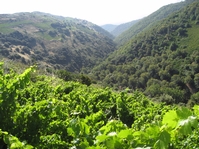 beaten path. Bierzo remains nearly as obscure as its top indigenous variety, Mencia, but the best Bierzo renditions of this grape are the most exciting wines now being made in Spain. In my opinion, the best of the best is Paixar, a wine springing from a joint venture between Alejandro Luna and Eduardo and Alberto Garcia (sons of Mariano Garcia, famous for his work at Vega Sicilia and his wines from Bodegas Mauro, Maurodos, and Aalto). Paixar is an expensive wine, but it is also stunningly intricate and harmonious, and early vintages such as the 2001 are still developing, with no sign of getting anything but better for another decade. beaten path. Bierzo remains nearly as obscure as its top indigenous variety, Mencia, but the best Bierzo renditions of this grape are the most exciting wines now being made in Spain. In my opinion, the best of the best is Paixar, a wine springing from a joint venture between Alejandro Luna and Eduardo and Alberto Garcia (sons of Mariano Garcia, famous for his work at Vega Sicilia and his wines from Bodegas Mauro, Maurodos, and Aalto). Paixar is an expensive wine, but it is also stunningly intricate and harmonious, and early vintages such as the 2001 are still developing, with no sign of getting anything but better for another decade.
The most recent release of Paixar is the 2008 ($100, imported by Grapes of Spain), and even at this young age it is remarkably complex, which is in turn attributable to its outstanding proportionality: No particular element overshadows the others. The wine shows subtle floral 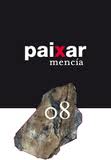 aromas akin to those one might find in Barbaresco or Côte-Rôtie, followed by fruit notes that run red as well as black, recalling cherries, plums and blackberries. Oak influence is apparent but subtle, with toasty, spicy notes and a bit of grip from wood tannin in the finish, but the fruit easily counterbalances the oak. As if this were not enough, the wine shows an almost palpable minerality recalling wet slate and graphite. Finally, its texture is almost as interesting as its aromas and flavors, seeming soft thanks to the ripeness of the fruit, but also focused on account of ample acidity and very fine-grained tannin. It is in a league with the world’s very best red wines, and in that context it remains very fairly priced--for the moment. The word is getting out on these great wines, and the day will come before long when they fetch prices much higher than those we’re seeing today. aromas akin to those one might find in Barbaresco or Côte-Rôtie, followed by fruit notes that run red as well as black, recalling cherries, plums and blackberries. Oak influence is apparent but subtle, with toasty, spicy notes and a bit of grip from wood tannin in the finish, but the fruit easily counterbalances the oak. As if this were not enough, the wine shows an almost palpable minerality recalling wet slate and graphite. Finally, its texture is almost as interesting as its aromas and flavors, seeming soft thanks to the ripeness of the fruit, but also focused on account of ample acidity and very fine-grained tannin. It is in a league with the world’s very best red wines, and in that context it remains very fairly priced--for the moment. The word is getting out on these great wines, and the day will come before long when they fetch prices much higher than those we’re seeing today.
Posted by Michael Franz at 10:07 AM
|
|
December 26, 2011
We will run our contributor' picks for Producer
and Wine of the Year in this space almost every day as 2011 winds down,
so please check back frequently to see the year's best. M.F.]
Wine Producer of the Year 2011: Sebastiani
I’ve been drinking Sebastiani wines for, well, way longer than I’d care to admit publicly but let’s just say for many, many years. The wines have always been perfectly fine, reliable, 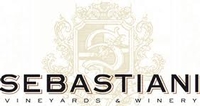 serviceable, affordable, seldom disappointing. Every now and then a really good vintage came along, but until recently there was never anything that made you jump up and shout, “Woo-hoo!” serviceable, affordable, seldom disappointing. Every now and then a really good vintage came along, but until recently there was never anything that made you jump up and shout, “Woo-hoo!”
Sebastiani is one of California’s most iconic wineries, having been founded in 1895 by an immigrant from Tuscany named Samuele Sebastiani. Unlike most American wineries, which were driven out of business by Prohibition, the Sebastianis managed to keep their estate afloat by producing sacramental and medicinal wines. Over the ensuing decades the Sebastiani family continued to manage the estate, sometimes for better, sometimes not so much as they rolled with various economic and stylistic punches. In 2008 Sebastiani Vineyards & Winery became part of Foley Family Wines. Mark Lyon, who has been the winemaker at Sebastiani for some 30 years, has lately been turning out some astonishingly good wines. Among the most noteworthy are “Cherryblock” Cabernet Sauvignon, Russian River Pinot Noir, and Sonoma County Chardonnay. The surprising 2007 Barbera is not to be missed, ditto the exceptional ‘08 Alexander Valley Cabernet, 08 Zinfandel and the 2007 “Sonoma County Red” (a succulent blend of Cab Sauvignon, Petit Verdot, Merlot, Malbec and Petit Sirah). Taste any of these wines and I think you’ll join me in an enthusiastic “WOO-HOO”!
Wine of the Year 2011
Singling out a specific wine from all the many exceptional ones enjoyed over a twelve month period is always a tough assignment, but you know the cliché: Someone has to do it. Although I hesitate to fling kudos at a wine that I couldn’t possibly afford to buy myself, I 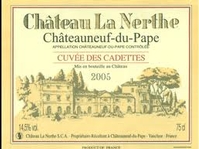 nonetheless have to say that the Chateau la Nerthe Châteauneuf du Pape “Cuvée des Cadettes” 2005 ($165, imported by Pasternak) that I was fortunate enough to sample a few months ago was undoubtedly the most exciting and memorable wine to cross my lips all year. Made from Grenache, Syrah and Mourvèdre, this sublime Châteauneuf du Pape tasted of the sun-baked earth and herb-scented wind that characterized the warm, dry summer of 2005. Supremely rich, ripe, powerful and fragrant, with extraordinary complexity and remarkable length this is a wine that will age beautifully. I will probably never have the good fortune to drink it again myself, but I will remember my encounter with it in 2011 for a very long time. nonetheless have to say that the Chateau la Nerthe Châteauneuf du Pape “Cuvée des Cadettes” 2005 ($165, imported by Pasternak) that I was fortunate enough to sample a few months ago was undoubtedly the most exciting and memorable wine to cross my lips all year. Made from Grenache, Syrah and Mourvèdre, this sublime Châteauneuf du Pape tasted of the sun-baked earth and herb-scented wind that characterized the warm, dry summer of 2005. Supremely rich, ripe, powerful and fragrant, with extraordinary complexity and remarkable length this is a wine that will age beautifully. I will probably never have the good fortune to drink it again myself, but I will remember my encounter with it in 2011 for a very long time.
Posted by Marguerite Thomas at 9:58 AM
|
|
December 22, 2011
[We will run our contributor' picks for Producer and Wine of the Year in this space almost every day as 2011 winds down, so please check back frequently to see the year's best. M.F.]
Producer of the Year
Champagne Louis Roederer is my producer of the year. This House has become a powerful force in the wine world, with its acquisition of many fine wineries throughout Europe--with the 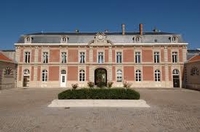 most recent, the acquiring of the great Second Growth Bordeaux, Château Pichon-Lalande. most recent, the acquiring of the great Second Growth Bordeaux, Château Pichon-Lalande.
In addition to producing what is arguably the best California sparkling wine, Roederer Estate, Louis Roederer also has Champagne Deutz in its portfolio. Deutz’ 1999 Cuvée William Deutz, its current release Prestige Cuvée, is one of the best Champagnes I’ve tasted this year. Roederer’s 2004 Cristal, released this year, will be magnificent, though it’s far too young to drink now if you want to see it at its best. Also, look for Louis Roederer’s current Rosé, its 2006--another winner from this outstanding Champagne House.
Wine of the Year
My wine of the year is the greatest Müller-Thurgau in the world, Tiefenbrunner’s Müller-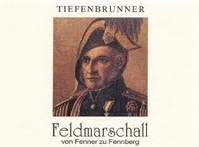 Thurgau Feldmarschall, made from an old-vine estate in Alto Adige, Italy, that is more than 3,000 feet in altitude. Its current release is its 2010, but I would recommend drinking its 2007 or 2008 now, as the wine needs a few years to show at its best. Thurgau Feldmarschall, made from an old-vine estate in Alto Adige, Italy, that is more than 3,000 feet in altitude. Its current release is its 2010, but I would recommend drinking its 2007 or 2008 now, as the wine needs a few years to show at its best.
I never knew that Müller-Thurgau could be this good until I tasted this wine. It has minerality, great acidity, lots of flavor, and a long finish. It is a wine that complements poultry and game as well as fish and seafood. It is currently my go-to white wine.
Posted by Ed McCarthy at 9:13 AM
|
|
December 20, 2011
The request came via email: Would I suggest a few gift wines for Christmas in the $10 to $20 range? Despite the degree of difficulty, I have accepted the challenge. Not that there aren't any number of swell wines in this price range, but it was only a month ago that I offered up my 20-20 Thanksgiving (20 wines for $20 or less) column, which included many, if not most, of the top wines in this category from my 2011 tasting sessions.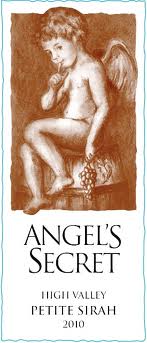 After glancing at my tasting notes, I was very happy to discover I could cover this same ground again without repeating any of the recommendations from the Thanksgiving piece. Voila, what follows is a full case of other top-notch wines that are sure to please without straining the budget. Please note that all but one of the recommended wines is white. For additional red wines in this price range, please visit creators.com and revisit My 20-20 Thanksgiving! After glancing at my tasting notes, I was very happy to discover I could cover this same ground again without repeating any of the recommendations from the Thanksgiving piece. Voila, what follows is a full case of other top-notch wines that are sure to please without straining the budget. Please note that all but one of the recommended wines is white. For additional red wines in this price range, please visit creators.com and revisit My 20-20 Thanksgiving!
Wines are rated on a 100-point scale. Wines are chosen for review because they represent outstanding quality or value, and the scores are simply a measure of this reviewer's enthusiasm for the recommended wine.
Angel's Secret 2010 Petite Sirah, High Valley ($17) — The grapes for this superb petite are sourced from the Shannon Ridge Vineyard in the rugged High Valley region northeast of the Napa Valley. It is said to be California's highest vineyard, at an elevation of more than 2,000 feet. This vintage expresses the intensity of fruit for which the vineyard is renowned, with impressive layers of blackberry, black plum and blueberry. There is an inviting floral note of violets, with hints of black pepper and a savory note of smoked game. All in all quite remarkable for a red wine in this price range. Rating: 92.
Colome 2010 Torrontes, Valle Calchaqui, Argentina ($15) — There is no longer any doubt the influence of European and American viticulture and technology has elevated the wine game in Argentina. This push by outsiders is manifest in the wave of classy Argentine Malbecs on the market. The improvements extend to other grape varieties as well, most notably the lowly Torrontes. This is an aromatic white given little import by aficionados, though recent vintages have turned a few heads. Once thought to be nothing more than a simple but pleasant diversion from the region's noteworthy red wines, torrontes more and more is growing up into a serious wine that offers a bit of complexity and finesse, and at a reasonable price. Colome's 2010 is a lovely, elegant torrontes that delivers aromas of lime, grapefruit, tropical fruits and a tantalizing floral note that doesn't overwhelm the senses or the taste buds. Torrontes, in the right hands, is now a wine that can stand up to grilled fish, shellfish and other savory morsels. This is something that could not have been said of torrontes just a few years ago. Rating: 91.
Villa Maria 2010 Sauvignon Blanc, Marlborough, New Zealand ($15) — Dollar for dollar, Villa Maria's "basic" sauvignon is probably the best bang for the buck in its genre. You could pay more — even Villa Maria has more expensive versions of the same wine — but if you're simply looking for a sauvignon with classic Marlborough personality, structure and flavor, the Villa Maria Private Bin is hard to beat at the price. This vintage shows juicy, lip-smacking flavors of gooseberry, passion fruit and grapefruit, scintillating minerality and a crisp, bracing finish. Rating: 91.
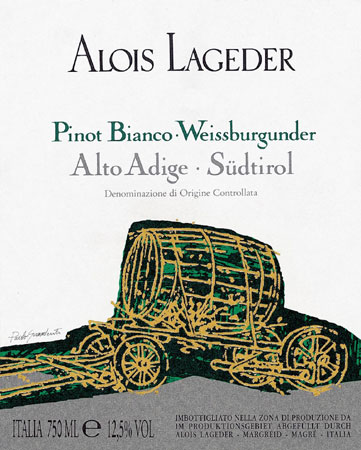 Alois Lageder 2009 Pinot Bianco, Vigneti delle Dolomiti, Italy ($14) — Lageder is probably best known for his white wines, and this lovely pinot bianco might be clue as to why that is. It shows a floral, honeyed nose of baked apples and pears, juicy and refreshing acidity on the palate, and a clean, fresh finish — a perfect quaffer, but serious enough to tackle steamed shellfish, grilled fish and savory tapas. Rating: 91. Alois Lageder 2009 Pinot Bianco, Vigneti delle Dolomiti, Italy ($14) — Lageder is probably best known for his white wines, and this lovely pinot bianco might be clue as to why that is. It shows a floral, honeyed nose of baked apples and pears, juicy and refreshing acidity on the palate, and a clean, fresh finish — a perfect quaffer, but serious enough to tackle steamed shellfish, grilled fish and savory tapas. Rating: 91.
Martin Codax 2010 Albarino, Rias Baixas, Spain ($15) — This well run cooperative provides a good home for the grapes of hundreds of growers in the fractured Rias Baixas, where small vineyard plots are the norm rather than the exception. The 2010 albarino exhibits notes of pear and lime, with excellent acidity and a rich, textured mouthfeel that is the result of what the winemaker calls "light" sur lie aging. The alcohol comes in at a refreshing 12.8 percent. Rating: 91.
Veramonte 2010 Sauvignon Blanc, Casablanca Valley, Chile ($12) — Sauvignon blanc has been Veramonte's most consistent winner since the winery opened with great fanfare in 1990. The 2010 Reserva delivers a burst of juicy grapefruit, with hints of green citrus and lemongrass. It's a first-class sauvignon at the remarkably low price of less than $12, and sure to please whether you're merely quaffing it on a warm summer day or getting down with steamed shellfish or light appetizers. Rating: 90.
J Vineyards & Winery 2010 Pinot Gris, California ($16) — Love the sweet red citrus fruits and floral element I find in this deliciously quaffable pinot gris from J, the Russian River Valley winery best known for its stylish sparkling wines. The perfect dry, refreshing party white. Rating: 88.
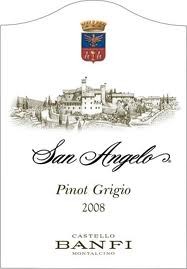 Castello Banfi 2010 San Agelo Pinot Grigio, Montalcino, Italy ($17) — Crisp and refreshing, this Banfi pinot grigio is made in the lighter style that is particularly popular worldwide. It offers notes of citrus and peach, with a hint of fennel in the bouquet. This is either the perfect summer quaffer,or a wonderful foil for tapas, mild cheeses and shellfish. Rating: 88. Castello Banfi 2010 San Agelo Pinot Grigio, Montalcino, Italy ($17) — Crisp and refreshing, this Banfi pinot grigio is made in the lighter style that is particularly popular worldwide. It offers notes of citrus and peach, with a hint of fennel in the bouquet. This is either the perfect summer quaffer,or a wonderful foil for tapas, mild cheeses and shellfish. Rating: 88.
Kenwood Vineyards 2010 Pinot Gris, Russian River Valley ($16) — Not being of the "anything but chardonnay" crowd, I am loathe to promote this Pinot Gris as an alternative to Chardonnay, though that's precisely what it is, a very good alternative selection for delicately flavored fish and spicy appetizers that might be overwhelmed by Chardonnay, a heavier wine. It shows vibrant notes of tropical fruit and is well balanced, fresh and clean. Rating: 88.
Simi 2010 Sauvignon Blanc, Sonoma County ($14) — Simi winemaker Steve Reeder made his first big wave in the wine business when he elevated the Kendall-Jackson Sauvignon Blanc program with impressive showings at a number of major wine competitions. He later moved on to Chateau St. Jean, where he also delivered top-notch sauvignon, and he's doing the same for Simi. The common thread among all of these sauvignons is balance and complexity. The 2010 Simi is a perfect example, for it's many different things without being too much of any one thing. It exhibits subtle herbal notes, hints of yellow citrus such as grapefruit and lime, red citrus such as tangerine, and a thread of minerality with juicy acidity. This is a refreshing sauvignon that is pleasant to sip on its own, but a wonderful accompaniment to savory appetizers and soft, ripe cheeses. Rating: 88.
Sella & Mosca 2009 Vermentino, Sardinia, Italy ($12) — Of all the delicious crisp white wines from the Mediterranean, vermentino is perhaps the least well known. For such a lovely wine, that's a pity. The '09 La Cala is a good example of the grape and the Mediterranean style. This wine is light and refreshing, low alcohol at 12.5 percent ABV (alcohol by volume), offers slightly tart aromas of lime citrus, with a distinctly floral note that is exotic and inviting. It's the perfect wine for tapas or steamed shellfish, though not as bracingly acidic as the popular wines made from the albarino grape. Rating: 87.
Liberty School 2008 Chardonnay, Central Coast ($12) — I'm often asked for suggestions for wedding wines. The problem everyone has is they want to treat their guests, especially those who appreciate the difference between good wine and swill, to something nice, but the size of the wedding party makes the per-bottle price a daunting issue. No problem. Liberty School has been delivering big flavor for small change for as long as I can remember, and its '08 Central Coast Chardonnay will be a crowd-pleaser. It offers ripe pear, apple and tropical fruit aromas, a luxurious, oily texture on the palate, and enough firm acidity to keep the flavors fresh. Party on! Rating: 87.
Follow Robert on Twitter at @wineguru.
Posted by Robert Whitley at 10:31 AM
|
|
To every wine there is a season. Perhaps that is a bit of an overstatement, but for fortified port wines, time and place are everything.
On a cold, wintry night, few beverages warm body and soul as well as a glass of port by the fire. And at 18 to 20 percent alcohol, which is typical for port, the log on the fire is optional. There is plenty of heat in this sweet libation.
Now that the Port "season" is upon us, this would seem to be the time to clarify a few of the 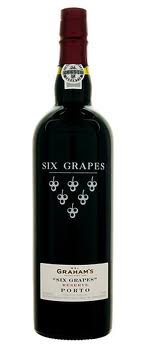 terms related to port that perennially mystify so many wine enthusiasts. First and foremost is the term port itself. Port is a style of wine that is made to be sweet (though there are dry white ports) and served with cheese or dessert, usually after dinner. Port-style wines are produced the world over, but true port is made in the Douro Valley region of Portugal from indigenous grape varieties. terms related to port that perennially mystify so many wine enthusiasts. First and foremost is the term port itself. Port is a style of wine that is made to be sweet (though there are dry white ports) and served with cheese or dessert, usually after dinner. Port-style wines are produced the world over, but true port is made in the Douro Valley region of Portugal from indigenous grape varieties.
Tawny port is a port that is subjected to extended aging in barrel, where it loses color and takes on a tawny shade of brown, or caramel. Tawny ports also lose their primary fruit aromas the longer they age, evolving toward aromas of caramel, candied fruit and nuts. Tawny port is especially good with desserts that are flavored with brown spices such as nutmeg, cinnamon and ginger. The most common tawny ports you will come across are those that have been aged an average of 10 or 20 years prior to bottling.
Ruby ports are those that see some time in barrel, but are aged primarily in the bottle. The top of the line in this category is vintage port. The great port houses only "declare" a vintage in the very best years. Ruby port made in non-vintage years are blended into "vintage character" ports such as Fonseca Bin 27 or Graham's Six Grapes.
Vintage-character ports sell for a fraction of the price of vintage ports, but they represent tremendous value because they are delicious. The major difference between vintage character and vintage is structural — vintage Ports are capable of improving with age over decades of cellaring, vintage-character ports are softer and fleshier when young and meant to be drunk upon release.
Late bottled vintage port, or LBV, also represents tremendous value, for these are ruby ports that while they fell short of the vintage designation, they are a cut above vintage character. These wines are aged up to four years in barrel and meant to be drunk within a few years of release. Because they don't combine multiple vintages, as vintage-character ports do, they do carry the year of production on the label, which causes confusion to some consumers who 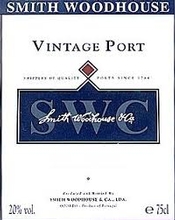 think they are purchasing a vintage port. Late bottled vintage will be clearly stated on an LBV label. think they are purchasing a vintage port. Late bottled vintage will be clearly stated on an LBV label.
Vintage port is the ultimate in the world of port and thus the most expensive, generally starting at about $50 a bottle but often topping $100 when the vintage is deemed extraordinary. Vintage ports require several years in bottle to tame the tannins. I typically don't open my vintage ports until they are at least 10 years old. They are capable of holding up 40 to 50 years in the exceptional vintages.
When drinking port, always remember they are big, complex wines, so they need to be served in glasses that allow the wines to aerate sufficiently to bring out the full range of aromas and flavors, as well as soften the tannins if the wine is being served young.
And remember that at 20 percent alcohol by volume, a little bit of port goes a long way, or at least until the chill is gone.
Posted by Robert Whitley at 8:40 AM
|
|
December 14, 2011
Here’s a good idea for what to give that food and wine aficionado on your gift list: A copy of The Food Lover’s Guide to Wine by Karen Page and Andrew Dornenburg. Not only is it extremely well organized, this is also one of those rare books that’s fun to just open up randomly and allow yourself be entertained (as well as informed) by what’s on the page. For 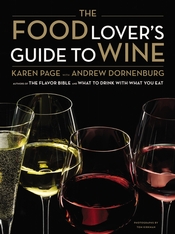 example, I just flipped Food Lover’s open to p.135, where my eye fell on the following quote from Hristo Zisovski, the beverage director at Manhattan’s Ai Fiori: “I love Chenin Blanc. But it is not for everyone. It is like wet wool, which can be a turnoff to some. When you drink it you feel this thick layer of minerality on your tongue. I happen to like minerality.” This is an excellent description of Chenin (I like minerality too!) and it also helps me understand why some folks just aren’t keen on this particular wine. example, I just flipped Food Lover’s open to p.135, where my eye fell on the following quote from Hristo Zisovski, the beverage director at Manhattan’s Ai Fiori: “I love Chenin Blanc. But it is not for everyone. It is like wet wool, which can be a turnoff to some. When you drink it you feel this thick layer of minerality on your tongue. I happen to like minerality.” This is an excellent description of Chenin (I like minerality too!) and it also helps me understand why some folks just aren’t keen on this particular wine.
I close the book and open it again, landing this time on p. 257, in a section called “Wine: the Perfect Complement for Every Course.” Here’s a practical little note from the authors themselves at the bottom of the page: “On a recent visit to Argentina and Chile, we saw this trick practiced successfully time and again: To counteract the earthy, herbal notes in big South American and other red wines, top the red-meat dishes that accompany them with an herbed sauce, such as chimichurri, salsa verde, or even pesto. Your palate will perceive the herbal notes as coming from the sauce, and not the wine, which will bring out the wine’s fruit flavors.”
One more random flip of the wrist takes me to a section called “Autumn Wines” (from Algianico to Zinfandel), with a useful quote from the fortuitously named Emily Wines, sommelier and wine director for Kimpton Hotels. “Autumn is when I start to look for things with nuttier flavors,” she writes. “Nuts and dried fruit flavors start to show up in our dishes, so the wines will reflect that. I am looking for something with dried fig or dried date flavors. Reds that fall into this profile would be reds from southern Italy, like an Aglianico-based wine or Valpolicella Ripasso, or aged California Cabernets. Sherry, Madeira, and Pedro Ximénez sherry all have dried fruit flavors and work with autumn desserts.”
One of the charms of Food Lover’s Guide is that it’s richly studded with tips, reflections, advice, and opinions from a host of influential sommeliers rather than expressing just one opinion from a critic, blogger, journalist, winemaker or other “expert.” You won’t agree with everything you read here, but you’ll concur that most of it makes good sense, a lot of the advice is downright practical, and some of it positively inspiring (as in--do I have a bottle of Chenin Blanc somewhere or am I going to have to rush out and buy one?)
I must also include a word about Tom Kirkman’s photographs, which go way beyond the slick vino-photos we see so often. Kirkman’s quirky portraits of sommeliers give a real sense of their personality (check out Belinda Chang on p. 194). Many of his pictures, such as the glass of white wine with reflections of palm trees shimmering in it (p. 136) depict an entire world in a single image--a feat impossible to do with words, and very rare in visual images. And unless you own the book yourself, try to refrain from licking the depiction of foie gras on p. 201.
Posted by Marguerite Thomas at 10:31 AM
|
|
To every wine there is a season. Perhaps that is a bit of an overstatement, but for fortified port wines, time and place are everything.
On a cold, wintry night, few beverages warm body and soul as well as a glass of port by the fire. And at 18 to 20 percent alcohol, which is typical for port, the log on the fire is optional. There is plenty of heat in this sweet libation.
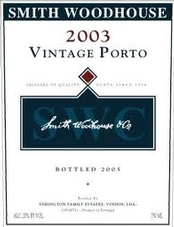 Now that the Port "season" is upon us, this would seem to be the time to clarify a few of the terms related to port that perennially mystify so many wine enthusiasts. First and foremost is the term port itself. Port is a style of wine that is made to be sweet (though there are dry white ports) and served with cheese or dessert, usually after dinner. Port-style wines are produced the world over, but true port is made in the Douro Valley region of Portugal from indigenous grape varieties. Now that the Port "season" is upon us, this would seem to be the time to clarify a few of the terms related to port that perennially mystify so many wine enthusiasts. First and foremost is the term port itself. Port is a style of wine that is made to be sweet (though there are dry white ports) and served with cheese or dessert, usually after dinner. Port-style wines are produced the world over, but true port is made in the Douro Valley region of Portugal from indigenous grape varieties.
Tawny port is a port that is subjected to extended aging in barrel, where it loses color and takes on a tawny shade of brown, or caramel. Tawny ports also lose their primary fruit aromas the longer they age, evolving toward aromas of caramel, candied fruit and nuts. Tawny port is especially good with desserts that are flavored with brown spices such as nutmeg, cinnamon and ginger. The most common tawny ports you will come across are those that have been aged an average of 10 or 20 years prior to bottling.
Ruby ports are those that see some time in barrel, but are aged primarily in the bottle. The top of the line in this category is vintage port. The great port houses only "declare" a vintage in the very best years. Ruby port made in non-vintage years are blended into "vintage character" ports such as Fonseca Bin 27 or Graham's Six Grapes.
Vintage-character ports sell for a fraction of the price of vintage ports, but they represent tremendous value because they are delicious. The major difference between vintage character and vintage is structural — vintage Ports are capable of improving with age over decades of cellaring, vintage-character ports are softer and fleshier when young and meant to be drunk upon release.
Late bottled vintage port, or LBV, also represents tremendous value, for these are ruby ports that while they fell short of the vintage designation, they are a cut above vintage character. These wines are aged up to four years in barrel and meant to be drunk within a few years of release. Because they don't combine multiple vintages, as vintage-character ports do, they do carry the year of production on the label, which causes confusion to some consumers who think they are purchasing a vintage port. Late bottled vintage will be clearly stated on an LBV label.
Vintage port is the ultimate in the world of port and thus the most expensive, generally starting at about $50 a bottle but often topping $100 when the vintage is deemed extraordinary. Vintage ports require several years in bottle to tame the tannins. I typically don't open my vintage ports until they are at least 10 years old. They are capable of holding up 40 to 50 years in the exceptional vintages.
When drinking port, always remember they are big, complex wines, so they need to be served in glasses that allow the wines to aerate sufficiently to bring out the full range of aromas and flavors, as well as soften the tannins if the wine is being served young.
And remember that at 20 percent alcohol by volume, a little bit of port goes a long way, or at least until the chill is gone.
Posted by Robert Whitley at 10:07 AM
|
|
December 7, 2011
“Once, during Prohibition, I was forced to live for days on nothing but bread and water.”
--WC Fields.
Mr. Rain’s Funhouse, the restaurant at Baltimore’s Visionary Arts Museum, launched its first Annual Repeal Day Dinner this past Sunday (December 4). Inspired by this I’m thinking of commemorating the historic occasion with a celebratory dinner myself. Taking a cue from Mr. 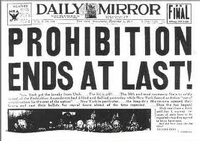 Rain’s chef, Bill Buszinski, whose own menu was a take-off of favorite fare from the Roaring Twenties, a dozen or so Oysters Rockefeller would be a good way to start the meal. And Buszinski’s main course, short ribs “cured” in root beer with braised fennel, is a concept that should be fun to do a riff on. Rain’s chef, Bill Buszinski, whose own menu was a take-off of favorite fare from the Roaring Twenties, a dozen or so Oysters Rockefeller would be a good way to start the meal. And Buszinski’s main course, short ribs “cured” in root beer with braised fennel, is a concept that should be fun to do a riff on.
At Mister Rain’s Repeal Day dinner, each course was accompanied by a different cocktail based on picks from the Prohibition era. While I’ll probably serve wine with the oysters and the short ribs, there are plenty of enticing cocktail options to choose from for pre-dinner toasts to Repeal. Some of the more enduring offerings from the period include the Mary Pickford (white rum, pineapple juice, grenadine and a maraschino cherry); the French 75 (gin, lemon juice and simple syrup topped off with Champagne); and the Sidecar (Cognac, Cointreau and lemon juice served in a sugar rimmed cocktail glass).
My usual go-to cocktail is a simple Gin Rickey (gin, fresh lime and sparkling water), but I have 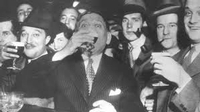 nothing against other gin drinks including gimlets (“a real gimlet is half gin and half Rose’s Lime Juice and nothing else,” according to Raymond Chandler in The Long Goodbye) and Negronis (gin, sweet vermouth and Campari). While gin may was Prohibition’s favorite booze, whiskey cocktails were also sought after, including the Stone Fence (rye and apple cider), the Scofflaw (Rye, dry vermouth), and Belle-Femme (equal parts Canadian Club and red Dubonnet garnished with orange.) nothing against other gin drinks including gimlets (“a real gimlet is half gin and half Rose’s Lime Juice and nothing else,” according to Raymond Chandler in The Long Goodbye) and Negronis (gin, sweet vermouth and Campari). While gin may was Prohibition’s favorite booze, whiskey cocktails were also sought after, including the Stone Fence (rye and apple cider), the Scofflaw (Rye, dry vermouth), and Belle-Femme (equal parts Canadian Club and red Dubonnet garnished with orange.)
“Prohibition has made nothing but trouble,” said Al Capone. Whether you raise a glass of gin, whiskey, beer, cider or wine, this is the week to toast the repeal of the Volstead Act.
Posted by Marguerite Thomas at 8:55 AM
|
|
 |
|